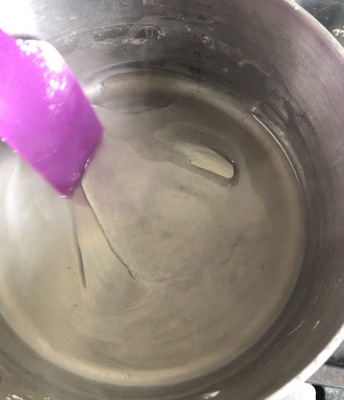
What you need:
A pan, A stirring spoon, A gas stove, corn starch, vinegar, water, glycerin, aluminium foil or plastic mould, a teaspoon and a tablespoon, food colour (optional)
What to do:
Add one tablespoon of cornstarch, four tablespoons water, one teaspoon of glycerin teaspoon vinegar into the pan.
Boil the mixture on medium heat and keep stirring constantly.
Once it starts turning into a gel, turn up the heat until and one the gel becomes transparent.
Quickly pour the gel onto the foil or into the mould and leave it to dry.
What happens?
In a day or two, the gel dries up to form a plastic!
Why?
Plastics are usually composed of very large molecules called ‘polymers. Each polymer, in turn, is made up of repeating sets of molecules known as monomers. ‘Mono’ means single and poly means many. An ideal plastic would have long straight chains of polymers. This chain-like structure would allow it to be flexible and strong.
In this case, we make our plastic from starch. Natural starch is made up of two kinds of polymers; one of these polymers, amylose, has a long and straight structure. The other one, amylopectin, has a branched sort of structure. For a good plastic, we need only the long, straight kind. So, we add vinegar to the starch, which breaks up the branches of e amylopectin. Now that we have a straight structure, we add glycerin which acts as a kind of lubricant at the molecular level. It makes the remaining starch structure pliant and flexible. That is how plastic is formed! And since this plastic is made from starch, a substance readily available in nature, it is perfectly biodegradable. Thus, it is a ‘bioplastic’.
Picture Credit : Google



